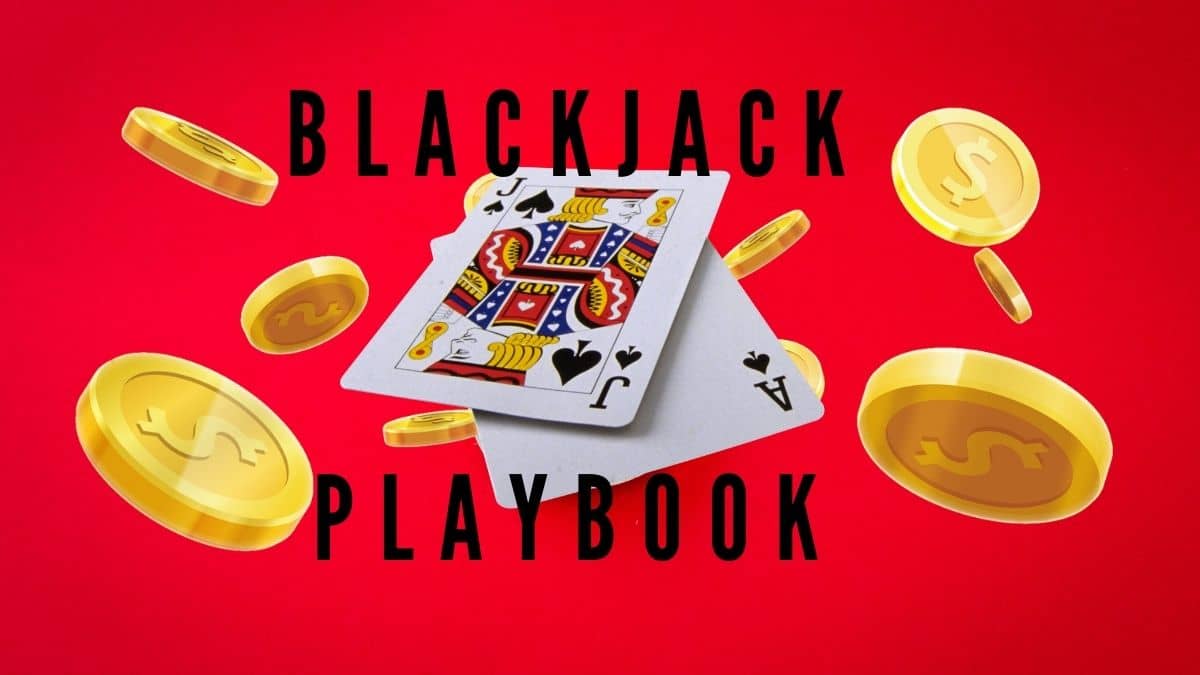There is no doubt that Blackjack is one of the best and most popular table games available. We’ve all seen how thrilling it can be on screen and in real life. Most especially if you’ve been to a real venue. A Blackjack game can surely be profitable for your cash account. It’s one thing to be a bystander and quite another to be a player. To increase your chance of winning, you need to follow the rules in the Blackjack playbook.
Movies like “21”, “The Hangover”, and “Rain Man” incorporate Blackjack heavily. And they provide a great example of how things may go wrong when you’re playing. One thing that all the scenarios have in common is that the main characters have all of the essential knowledge and skills before starting the game.
In real life, many players mistakenly believe that they can start playing and become professionals overnight. Well, mastering the game is not that easy. There are some factors to consider that could otherwise result in you making costly Blackjack mistakes. So, what not to do in Blackjack?
What are the Blackjack strategy mistakes that you should avoid?
To begin with, Blackjack is a card game of strategy. Also, the outcome of each round is undoubtedly influenced by luck. However, it is your card-playing abilities that will determine whether you come out on top or succumb to the pressure and lack of information. Whether you play at one of the online live casinos in Singapore or an RNG version of Blackjack, each move you make will have a different value depending on the scenario.
In Blackjack, the idea is to always try to get the most value out of each action you make. The Blackjack rulebook can help you decide which action to take. However, every step away from this indicates that there is an error in your Blackjack strategy and plan.
Honestly, Blackjack is a very simple game to play using the best strategy. The Blackjack playbook can help you learn what the best strategy in every situation is. Despite that, most Blackjack players still tend to commonly make many mistakes. Thus, they continue playing the game wrong because they do not know any better. On the other hand, they are also too lazy to play the right Blackjack strategy.
The following is a list of common Blackjack mistakes. You must avoid these mistakes to avoid losing more money you can afford to lose.

Blackjack Playbook #1: Making Insurance Bet
The insurance bet is one of the most prevalent Blackjack strategy mistakes. Also, it is hardly worth thinking about, let alone making one. When the dealer’s face-up card is an Ace, an Insurance bet becomes available. If he or she has a hypothetical Blackjack, paying half the value of your wager for insurance will cover your losses at a 2:1 ratio if you lose.
However, the odds of the dealer having a Blackjack are mathematically shown to be 9:4. Therefore, if we are going to do the math, you will see that taking the insurance bet will cost you more in the long term. So, the next time you face this scenario, consider the broader picture. Thus, you need to decide not to go for it since it is not worth making it.
The mathematics to show why this is the case is as follows:
- When the dealer has an Ace, 16 cards (four suits of 10 to K) will form a blackjack.
- The dealer’s Blackjack will not be made with 36 cards (four suits of 2 to 9).
- The dealer now has a 9:4 chance of getting a Blackjack.
- Your return on investment is 2:1.
- This bet will not be profitable since the dealer will not have a Blackjack enough.
- On blackjack insurance, the house edge is above 7%.
- Even games with low house margins, such as American roulette (5.26 percent house edge) and Caribbean poker (5.26 percent house edge), pay more than blackjack insurance.
An insurance bet is frequently enticing since the side bet results in significantly larger rewards than in a regular game. However, as a general rule, the house edge on these bets is significantly higher than when playing the game normally.
Blackjack Rulebook #2: Choosing a Blackjack Table with a 6:5 Ratio
This is probably one of the Blackjack mistakes that often cost you money even before the first card is dealt. In most cases, the Blackjack table layout you will come across pays 3 to 2.
However, some casinos have discreetly altered the payout ratio to 6 to 5 in recent years. It’s easy to become baffled and fall for it, especially if you’re new to the game. We understand why newbie players do this because 6 is greater than 3. However, the reality is far different than this. Thus, there is a reason why choosing a 6:5 table is regarded as one of the top Blackjack mistakes.
Blackjack Playbook: What not to do in Blackjack?
Let’s perform some quick math. Assume you’ve placed a $100 bet. For a Blackjack, you are expected to earn a $150 payoff if the odds were 3 to 2. In the same case, a 6 to 5 ratio would net you $120. This happens because the difference in the ratios also affects the Blackjack table’s house edge.
Typically, a Blackjack table features a house edge of 0.5 percent to 1 percent. This is also the percentage of your bet that the house keeps. Furthermore, this adjustment increases the ratio by 1.5 percent as well. Thus, resulting in less money for you and more for the casino.
However, you are not the only one who is coping with these poor odds. The dealer is also on the losing end of the game. Because most of his tips come in the form of bets. Therefore, his tips fall to be an uneven number because of the 6:5 ratio. So, if you stake a $1 tip when you get a Blackjack, the dealer will only get $1 instead of $1.20.

How does it happen?
When his tip is an unequal quantity owing to the 6 to 5 ratio, which is most of the time, if you offer a £1 bet as a tip when you obtain a blackjack, instead of receiving £1.20 as he should, he will only receive £1. This occurs because casinos do not have chips for little denominations like pennies. On a sign or something similar, the table’s odds are generally given. If you’re not sure, ask the vendor. If you can’t find a 3 to 2 table, leave the casino and avoid committing one of the most common blackjack errors.
This occurs because casinos do not have chips for small amounts like cents. When choosing a Blackjack table, take note of the sign that states the odds of that table. If you’re not sure, ask the vendor. Notably, if you can’t find a 3:2 table, leave the casino. So, you can avoid committing one of the most common Blackjack mistakes.
Blackjack Playbook #3: Choosing to stand on Hard 12 when the dealer shows a 2 or 3.
Rather than standing, the smart move here is to hit. Most people will tell you that they do this because of the possibility of getting busted. In addition, the cards numbered 2 through 6 are known as “dealer burst cards” by many people.
Why is that?
Because it’s almost inevitable that the dealer will go beyond 21. The gambler avoids the risk of busting before the dealer by standing on 12. There are a few mathematical scenarios to follow here, and the main guideline to follow is as follows.
If your total is a solid 13, and the dealer is showing a 2, 3, 4, 5, or 6, you should stand. Because you don’t want to deprive him or her of the thrill of busting. With a 12 and the cards 4, 5, and 6, it’s also a good idea to take a stand. However, it is preferable to hit with a 2 or 3.
Also, there are bound to be cards in the deck that work against you and bust your hand. However, there are twice as many people who will make it better. As a result, do yourself a favor and take a chance on your odds. Then, you wouldn’t be making one of the top Blackjack mistakes.
Blackjack Rulebook #4: When the dealer shows an Ace, you can choose to stand on 16.
Another Blackjack mistake occurs when it appears sensible to stand. But in actuality, the odds are somewhat better if you hit. You’ll almost certainly bust here because any card higher than a 5 will end in your hand. In this case, you want to lose less in the long run rather than more in the short run.

When the dealer shows an Ace, the chances of losing more money increase significantly. Truth is that you won’t need to hit in this situation if you’re stuck on 16. Instead, it is better that you hit rather than stand when the dealer’s card is a 7 or higher.
Remember that, even though you’ll most likely lose money, we’re talking about losing less money in this scenario. By the way, some casinos do include a “surrender” option. After dealing with the initial cards, you can give up your hand and get half of your stake back. If you have a hard 16 (no Ace) and are up against a 9, 10, or an Ace, then you can use it to your advantage.
What not to do in Blackjack #5: Standing on Soft 17
This is a golden rule in the Blackjack playbook and one of the most typical Blackjack mistakes. Never, ever, stand on soft 17 in a Blackjack game. Above all, a soft 17 in Blackjack refers to the pairing of an Ace, worth 11 and a 6. Now, this hand may appear to be good enough to stand on. And we understand why you might think so. However, in reality, standing on soft 17 is a little different. Worst, you are more likely to lose more money standing than hitting.
You might consider it from the viewpoint of the dealer and the casino. So, the dealer must hit on soft 17. Because it enhances the house edge as well as the casino’s profit.
If it’s more advantageous for the gaming establishment to bet on a soft 17, why shouldn’t it be the same for the player? So when you are dealing with a soft 17, never stand regardless of what Blackjack variation you are playing.
Blackjack Playbook #6: Doubling down on 11 when the dealer shows an Ace.
Doubling down refers to the procedure of doubling your initial stakes in exchange for an additional card in your hand. Because there’s a good probability you’ll draw a 10 from the deck and obtain a Blackjack.
So, the conventional guideline in Blackjack Playbook is to always double down on 11. However, there is one exception to this rule: if the dealer shows an Ace, you should not double down. Because this signifies that the dealer has a soft 17 hand.
This is also a rule that you should inquire about while choosing a Blackjack table. Some casinos require their dealers to hit on a soft 17, while others insist on standing. If you know you’re going to get a hit, you should go all in.
However, when the dealer chooses to stand, then the player should hit as usual. If you have an option, every blackjack expert will tell you to choose the table where the dealer will stand on a soft 17. By doing so, your chances as a player can slightly be improved a little.
What not to do in Blackjack #7: Not splitting the Aces
This is one of the online Blackjack mistakes that might cost you a lot of money. Not splitting the Aces could be a bad hand if you have a pair of Aces.

What could a 2 or a 12 possibly be used for?
It’s a complete waste of time. However, if you break them into two different hands, you could have some powerful hands at your disposal. Thus, you will have the capability of bringing the dealer to his knees.
According to statistics, you have a 31% chance of getting a 10 from the deck, which would change your hand into a Blackjack right away. We’re talking about the best-case scenario here. Many other possibilities could help you convert your hand into a force to be reckoned with. Don’t pass up the chance to strike the dealer and the casino where it hurts the most.
In Blackjack Playbook, when should you split?
When your first two cards are identical, you can split them to make two different hands, according to the blackjack rulebook. When it comes to taking the edge away from the casino and putting it back in your favor, knowing when to split your dealt hand is crucial. Notably, a pair of aces or a pair of eights are the two hands you should ALWAYS split.
Blackjack Playbook FAQs:
What should you avoid doing when playing Blackjack?
Here are some things you should never do while playing blackjack. Make sure you’re not stacking your bets wrongly. Also, refrain from instructing others on how to play. Don’t be scared to seek help if you don’t know how to play. You should know when to touch the cards in Blackjack. Furthermore, once the bets have been placed, do not touch the chips. Don’t forget to tip the dealer as well. Likewise, do not bring your feelings to the table. Similarly, do not give the dealer your money. When playing Blackjack, you should be aware of a variety of blackjack etiquette and strategies.
In Blackjack, should you hit on 16 against an Ace?
Based on basic calculations, a dealer with a total of 7, 8, 9, 10, or Ace will finish up with a total of 17 to 21 between 74 and 83 percent of the time. As a result, a Blackjack strategy will say that striking the 16 is the best way to beat the dealer.
Is it a good idea to split tens?
In face-up Blackjack, where all of the cards are displayed, including the dealer’s cards, splitting 10s against the dealer’s 13, 14, 15, or 16 is the correct strategy. During a Blackjack tournament, it often occurs during the final round.




